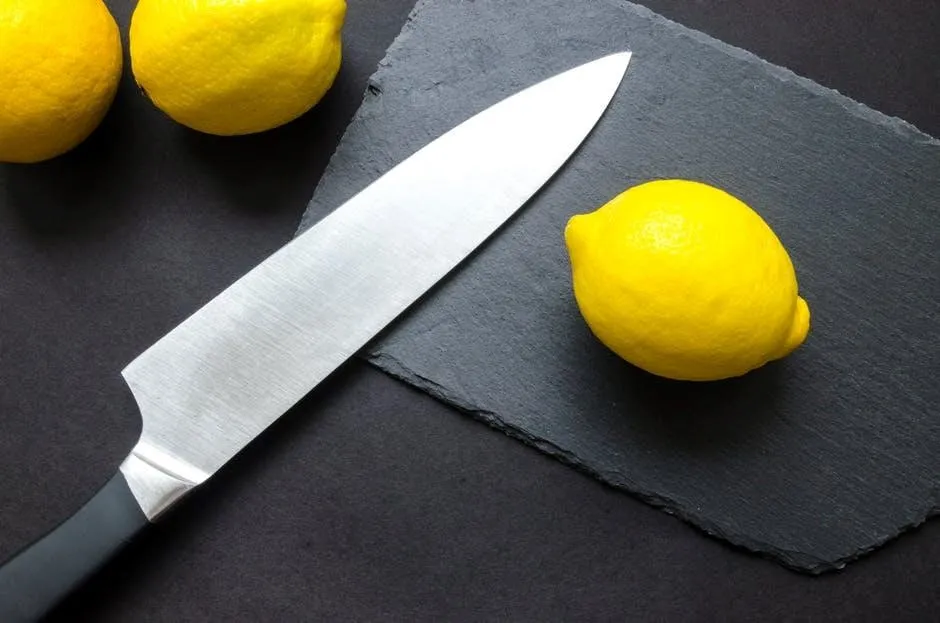Japanese knives are among the most coveted tools for chefs worldwide, celebrated for their exceptional sharpness, precision, and durability. They’re truly essential in any kitchen!
But did you know there are several types of Japanese knives, each with unique characteristics and specific purposes? Understanding these differences is crucial before investing.
Join us in this Japanese cutlery guide as we dive into the fascinating world of Japanese knives and discover which one is perfect for your culinary adventures!
Santoku Knife
The Santoku knife is a versatile, all-purpose knife perfect for everyday use. Its name means “three virtues” in Japanese because it can handle slicing, dicing, and mincing. This knife has a straight edge and is shorter than other Japanese knives, usually about 5-7 inches long.
Unlike Western-style knives, the Santoku knife does not have a bolster or a curved blade. Instead, it has a flat cutting edge, which makes precise cuts easier and helps keep food from sticking to the blade. Because of its versatility, the Santoku knife is popular with both home cooks and professional chefs.
Gyuto Knife
Another one of the most popular types of Japanese knives is the Gyuto knife. It is often referred to as the Japanese equivalent of a chef’s knife. It shares many similarities with its Western counterpart.
This includes a pointed tip, curved blade, and ergonomic handle. However, some key differences make the Gyuto knife unique.
First, the blade of a Gyuto knife is thinner and sharper compared to a chef’s knife. This allows for more precision and control when cutting. This makes it perfect for delicate tasks like slicing sashimi or chopping herbs.
Additionally, the shape of the blade makes it easier to rock back and forth while cutting, allowing for faster and more efficient slicing. This makes the Gyuto knife an excellent choice for both Western and Japanese-style cooking.
Chukabocho Knife
The Chukabocho knife, also known as the Chinese cleaver knife, is a powerful and versatile knife used for a wide range of tasks. Its name translates to “Chinese-style knife” in Japanese.
This knife has a broad blade with a slight curve and a sharp edge that tapers to a point. It’s perfect for chopping, slicing, and dicing vegetables, meats, and even boneless fish.
The Chukabocho knife is typically heavier and bulkier than other Japanese knives, with a thicker spine. This makes it suitable for tasks that require more force and pressure, making it a favorite among professional chefs who need to cut through tougher ingredients quickly.
Deba Knife
Japanese knife styles also include the Deba knife, a heavy-duty blade primarily used for cutting and filleting fish. This knife has a thick spine and a single bevel edge, making it incredibly sharp and sturdy.
The pointed tip of the Deba knife allows for precise maneuvering around bones and joints. Its wide blade is perfect for slicing through fish skin. If you’re looking to master the art of preparing sushi or sashimi, the Deba knife is a must-have in your collection.
Explore the Different Types of Japanese Knives
These are just a few examples of the many types of Japanese knives available. Whether you’re a professional chef or an aspiring home cook, having at least one Japanese knife in your kitchen will elevate your culinary game to the next level. Happy cooking!
Is this article helpful? Keep reading our blog for more.

Jasper Bruxner is a passionate and versatile blogger with a keen eye for trends and a knack for crafting engaging content. As the founder of WendyWaldman, he has established himself as a trusted resource in a diverse range of niches, including food, tech, health, travel, business, lifestyle, and news. He tends to share the latest tech news, trends, and updates with the community built around Wendywaldman. His expertise and engaging writing style have attracted a loyal following, making him a respected voice in the online community.




